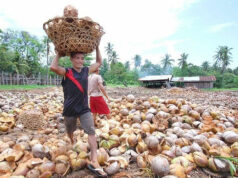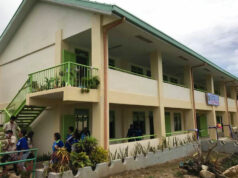THE Department of Energy (DoE) is planning to draft an order promoting the development of geothermal energy, in a bid to regain prominent position for the Philippines among global producers.
In a statement over the weekend, Energy Secretary Alfonso G. Cusi said the renewed push for geothermal arose out of a recent meeting with other department officials to discuss ways to maximize indigenous energy resources.
“I would like to issue an order to really look deeply and comprehensively into how we can develop geothermal. I have been really thinking about it, assessing how we are addressing RE (renewable energy),” he said.
The National Geothermal Association of the Philippines (NGAP) said in a statement that private companies are finding it difficult to pursue “numerous” underdeveloped geothermal energy resources because of the “high risk and capital-intensive nature of exploring and developing these areas along with the lack of a guaranteed rate under the Feed-in-Tariff (FIT) system.”
The industry recently sought the support of the DoE in encouraging geothermal development through risk-sharing between the private sector and the government.
The NGAP is seeking to have geothermal energy granted “priority” dispatch to the grid to ensure the resilience of the energy sector during the pandemic.
“Prioritizing the use and dispatch of geothermal is crucial not only to encouraging the development of our indigenous geothermal resources but to the build back better approach to ensuring the resilience of the energy sector as the country finds ways to address the COVID-19 (coronavirus disease 2019) pandemic,” NGAP President Joeffrey A. Caranto said.
According to Mr. Cusi, a single geothermal plant is the equivalent of a 1,000-megawatt (MW) solar farm.
“Eto, proven na natin itong geothermal (We have already proven our capability in geothermal energy). Let’s go for it and regain our previous global standing as one of the top countries in geothermal development,” he said.
In 2018, the Philippines was third among geothermal energy-producing countries, behind Indonesia. The US occupied the top position.
Despite being expensive and taking a longer gestation period, geothermal energy is seen to aid in sustaining the country’s energy security in the long run.
“I am for RE that would help improve the energy security of the country,” Mr. Cusi said.
The Philippines opened its first geothermal plant in Tiwi, Albay in 1979. A total of 1,966 MW worth of geothermal capacity had been installed by 2010.
Between 2009 and 2019, the Philippines added 82.50 MW worth of geothermal, falling well behind the medium-term target of 1,495 MW in new capacity by 2030 under the National Renewable Energy Plan. — Adam J. Ang



